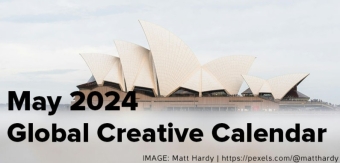Diversity is more than just a buzzword to be wheeled out every time you need to prove how “progressive” you are and it’s time all creatives sat up and took note. The clarion call has been ringing out for years now but from film and television to publishing and advertising, the creative industries seem to be stuck in a rut.
Their diversity tactics are simply not working as well as they should. So, what’s holding them back and why is it that often well-intentioned strategies continue to fall short?
Surface-Level Solutions vs. Systemic Change
One of the primary reasons diversity tactics fall short is their focus on surface-level solutions. Diversity training, hiring quotas and mentorship schemes are all commendable efforts, of course, but they are not enough and can be seen as quick fixes rather than genuine attempts to address the deeper biases within the industry.

Andreas Krasser
While these tactics are all certainly steps in the right direction, they often encounter systemic and ideological barriers that keep them from truly soaring and facilitating genuine systemic change. Without tackling the root causes of inequality, such as unequal access to education, networking opportunities, and financial barriers, lasting change is simply not going to happen.
The Challenge of Tokenism
Tokenism is another significant challenge that it can be quite easy for companies and individuals to lapse into without even realising it. When companies hire or promote a small number of individuals from underrepresented groups to showcase diversity, for example, it can lead to a false sense of progress.
This approach not only oversimplifies the complex issue of diversity but also places undue pressure on those individuals to represent their entire community, often in environments that have not fully embraced inclusivity at their core. This can lead to deeper resentments that actually push back progress quite substantially.
Resistance to Change
Resistance to change within the industry also plays a crucial role in progress pushbacks. The creative industries are still, in many ways, guided by legacy networks and more traditional ways of working, which makes it difficult for new voices to break through.

Andreas Krasser
The stain of nepotism, for example, is felt more deeply in our industries than anywhere else and even when diversity initiatives are put in place to combat this, there may be a lack of genuine commitment if the CEO’s son suddenly decides he wants a job. Ultimately this will most likely lead to half-hearted implementation and limited impact.
Effective Diversity Strategies
For diversity efforts to be more successful, the creative industries must adopt a more holistic and systemic approach. This involves:
Embedding Diversity at All Levels: Diversity and inclusivity should be integrated into every aspect of organizational culture, from hiring practices and storytelling to leadership training and decision-making processes.
Fostering Genuine Inclusivity: Beyond numerical diversity, creating an environment where diverse voices are truly heard and valued is crucial. This means not only inviting diverse individuals into the room but also actively listening to and acting on their perspectives.
Addressing Systemic Barriers: Tackling the broader systemic issues that limit diversity requires collaboration across the industry and with educational institutions, government bodies, and community organizations.
Long-Term Commitment: Finally, a long-term commitment to diversity and inclusivity is essential. This means setting clear goals, regularly evaluating progress, and being willing to adapt strategies in response to feedback and changing societal contexts.
Ultimately, we need to understand that diversity is not a liability; it’s an asset. We all have the opportunity to use the innate diversity of our various industries to create more value and impact and expand the reach and relevance of our content by appealing to a wider and more diverse audience.

Andreas Krasser
The way forward is certainly not obvious and might mean overwriting biases many of us have spent our lives reinforcing but the result is going to be a better industry with better work. And that’s what it’s all about, right?
Another Creative Opinion
Linda Nguyen, Human Resources Manager @ Waste Creative
"Sometimes D&I initiatives can seem like a box ticking activity and as a result, they feel disingenuous. Companies need to ensure all leadership and managers are on board, that they have an understanding of the importance of D&I and that they’re focused on driving it through to the rest of their teams.
D&I initiatives should also be ingrained and a focus for companies in all areas of a business, from recruitment, culture and training through to the work that the agency is creating. It takes time and effort to maintain this, and this can be a challenge for lots of agencies."






